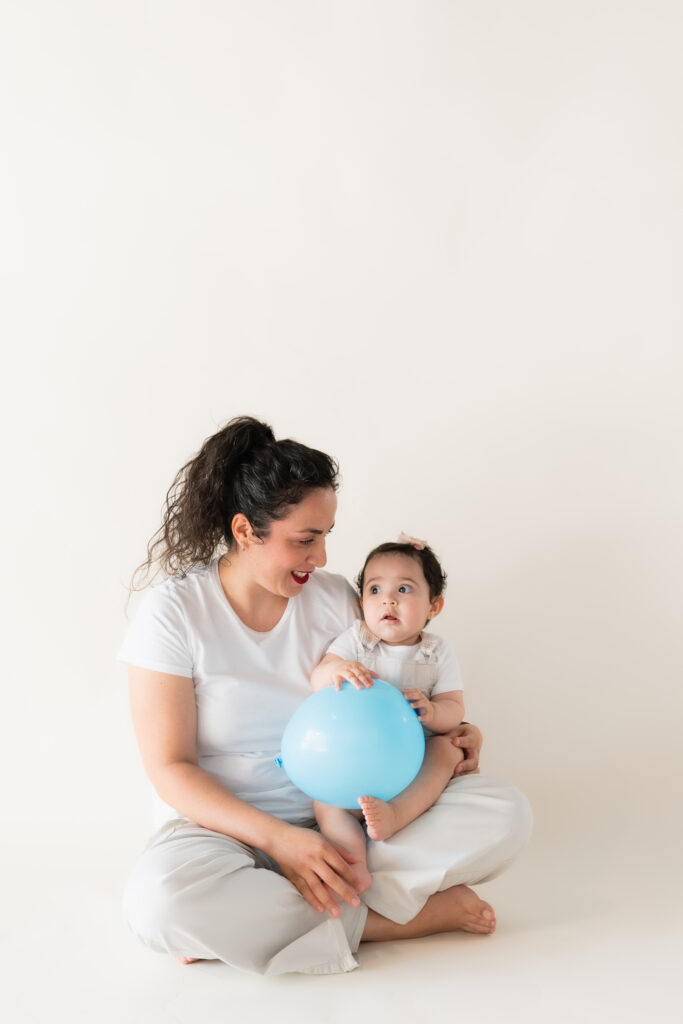Imagine being a parent or caregiver of a child with mobility challenges, and you find yourself asking the question: “Can I use a stroller for my child?” It’s a common concern that many people face when navigating the world of mobility aids and accessibility. In this article, we will explore the possibilities and considerations of using a stroller for a child with mobility challenges, providing you with guidance and insights to help you make an informed decision that suits your little one’s needs. So, let’s dive in and discover the answers together!
Choosing the Right Stroller
Understanding the Child’s Needs
When it comes to choosing the right stroller for a child with mobility challenges, it is crucial to first understand their specific needs. Every child is unique, and their mobility needs may vary depending on their condition. Take the time to assess the child’s abilities, limitations, and any specific requirements they may have. Consider factors such as their strength, ability to walk or sit independently, and any additional support they may need.
Consulting with Healthcare Professionals
Consulting with healthcare professionals is highly recommended when choosing a stroller for a child with mobility challenges. These professionals, such as doctors, physical therapists, and occupational therapists, have the expertise and knowledge to guide you in selecting the most suitable stroller for your child. They can provide valuable insights into the specific features and considerations that will best meet your child’s needs.
Exploring Specialized Strollers
For children with significant mobility challenges, specialized strollers may be necessary. These strollers are specifically designed to provide optimal support, comfort, and mobility for children with disabilities or unique needs. Specialized strollers often come with customizable features such as adjustable seating positions, specialized harness systems, and additional support devices. Exploring the options available in this category can help ensure your child’s comfort and safety.
Considering Adaptations and Modifications
In some cases, adaptations or modifications may be necessary to make a standard stroller suitable for a child with mobility challenges. This can include adding additional support devices, such as positioning inserts or straps, to provide the necessary stability and support. It is important to consult with healthcare professionals or manufacturers to ensure that any adaptations or modifications are done correctly and safely.
Safety Considerations
Ensuring Proper Restraints
One of the most important safety considerations when using a stroller for a child with mobility challenges is ensuring proper restraints. Make sure that the stroller has a secure and adjustable harness system that can keep the child comfortably in place during movement. Check that the restraints are in good condition and that they can be easily adjusted as needed. The child should be securely fastened within the stroller at all times to prevent accidents or injuries.
Checking Weight and Size Limits
Each stroller has its own weight and size limits, and it is essential to adhere to these guidelines to ensure safety. Exceeding these limits may compromise the stability and overall safety of the stroller. Consider the child’s weight and size when selecting a stroller and double-check the manufacturer’s recommendations to ensure you are within the specified limits.
Testing Stability and Durability
Stability and durability are crucial factors to consider when choosing a stroller for a child with mobility challenges. A stable stroller will minimize the risk of tipping over or wobbling, providing a secure and comfortable ride for the child. Test the stability of the stroller by applying gentle pressure on different areas and ensure that it remains steady. Additionally, assess the overall durability of the stroller to ensure it can withstand regular use and any potential challenges it may face.
Inspecting Brake and Locking Systems
The brake and locking systems of a stroller play a vital role in ensuring the child’s safety. Before using a stroller, thoroughly inspect the brakes to ensure they are in good working condition. Test the brakes on different terrains to assess their effectiveness. Additionally, check the locking mechanism of the stroller to ensure that it can be securely locked when stationary. Faulty brakes or a weak locking system can pose a significant safety risk.
Evaluating Terrain and Environmental Factors
Consider the specific terrain and environmental factors that the stroller will be exposed to. For instance, if you frequently go for walks or outings on uneven surfaces or rough terrains, choose a stroller with larger wheels and robust suspension systems that can handle these conditions. If you live in an area with extreme weather conditions, look for a stroller that offers protective features such as a sunshade or weather cover. Evaluating these factors will help ensure the safety and comfort of both you and your child.

Maneuverability and Ease of Use
Evaluating Maneuvering Options
When selecting a stroller for a child with mobility challenges, consider the various maneuvering options available. Different strollers offer different steering mechanisms, such as swivel wheels or fixed wheels, which can impact the ease and maneuverability of the stroller. Test out the different options and consider which one would be most suitable for your needs and the specific mobility challenges your child may have.
Adjusting Handles and Controls
Ensure that the handles and controls of the stroller can be easily adjusted to accommodate your height and comfort. Having handles at the correct height will prevent strain or discomfort when pushing the stroller. Additionally, check that the controls, such as brakes or folding mechanisms, are within easy reach and can be operated effortlessly.
Folding and Transporting the Stroller
Consider the ease of folding and transporting the stroller, as this can greatly impact its overall usability and convenience. A stroller that can be easily folded and unfolded with one hand can make outings more manageable. Check the weight and dimensions of the stroller when folded to ensure it can be stored or transported without much difficulty. These features can significantly enhance the practicality and ease of using the stroller.
Special Features and Accessories
Supportive Seating and Positioning
For children with mobility challenges, supportive seating and positioning are paramount for their comfort and safety. Look for strollers that offer customizable seating options, such as adjustable backrests and leg supports, to provide optimal positioning for your child. Consider their specific needs, such as additional head or trunk support, and choose a stroller that can accommodate these requirements.
Additional Supportive Devices
In some cases, additional supportive devices may be needed to enhance the child’s comfort and safety in the stroller. This can include positioning inserts, lateral supports, or abdominal supports, among others. Consult with healthcare professionals to determine if any additional devices are necessary and ensure that the stroller can accommodate them.
Optimal Storage and Accessibility
Having adequate storage space in a stroller can be highly beneficial, allowing you to conveniently carry essential items for your child. Look for strollers that offer ample storage options, such as baskets or compartments, that can accommodate items like diapers, snacks, or medical supplies. Accessibility is also crucial, ensuring that you can easily reach and retrieve these items without disrupting your child’s comfort.
Protective Sunshade and Weather Cover
Protecting your child from the elements is vital, especially when using a stroller for a child with mobility challenges. Consider strollers that come with a protective sunshade or weather cover to shield your child from harsh sunlight, wind, or rain. These features can provide added comfort and ensure that your child remains protected during outdoor activities.
Consideration for Communication Tools
For children with communication challenges, it is essential to consider strollers that allow for easy interaction and communication. Look for strollers that provide options for attaching communication devices or aids, such as trays or mounts, to ensure that your child can comfortably interact with their surroundings and communicate their needs.

Benefits of Using a Stroller
Improved Mobility and Autonomy
Using a stroller can significantly improve the mobility and autonomy of a child with mobility challenges. It allows them to move around more freely and participate in various activities. Whether it’s going for a walk in the park or enjoying a family outing, a stroller provides the necessary support and comfort for your child to explore their surroundings and engage with the world.
Enhanced Social Interaction
A stroller can also enhance social interaction for a child with mobility challenges. It provides an opportunity for them to interact with their peers, caregivers, and the wider community. By being at eye level with others, a stroller enables better communication and socialization, which is essential for a child’s development and overall well-being.
Convenience for Caregivers
Using a stroller can greatly enhance convenience for caregivers. It provides a secure and comfortable way to transport the child, reducing the physical strain that may come from carrying them for extended periods. Additionally, the storage options in a stroller allow caregivers to carry essential items, freeing up their hands and ensuring they have everything they need during outings.
Integration into Daily Activities
A stroller allows for seamless integration into daily activities for both the child and their caregivers. It provides a means for the child to participate in various daily routines, such as grocery shopping, visits to the park, or attending appointments. By incorporating the child into these activities, a stroller promotes inclusion and a sense of belonging.
Challenges and Limitations
Physical and Mobility Restrictions
While a stroller can provide numerous benefits, it is important to acknowledge the challenges and limitations that may arise. Some children with severe mobility challenges may have limitations that prevent them from utilizing a stroller effectively. For example, a child with significant muscle weakness or paralysis may require alternative forms of support and transportation.
Accessibility in Certain Environments
Not all environments may be easily accessible for strollers, especially in situations where ramps or suitable pathways are limited. Consider the accessibility of the places you plan to visit and ensure that they can accommodate a stroller. Being prepared and aware of potential accessibility limitations will help in planning outings that are comfortable and enjoyable for your child.
Limitations of Regular Strollers
Regular strollers may not always meet the specific needs of a child with mobility challenges. While they can provide basic support and mobility, specialized strollers may offer more comprehensive features and customization options. It is important to assess the requirements of your child to identify if a regular stroller is sufficient or if a specialized stroller would be more appropriate.
Financial Considerations
Specialized strollers can sometimes be more expensive than regular strollers, and this may pose a financial burden for some families. However, it is important to consider the long-term benefits and safety considerations when making a decision. Look for organizations or programs that may offer financial assistance or funding options for families in need. Researching different options and exploring potential resources can help alleviate the financial strain.

Alternatives to Strollers
Wheelchairs and Adaptive Seating
For children with significant mobility challenges, wheelchairs and adaptive seating may be more suitable alternatives to strollers. Wheelchairs provide greater support and customization options, allowing for improved mobility and positioning. Consulting with healthcare professionals will help determine whether a wheelchair or adaptive seating is a better fit for your child’s specific needs.
Assistive Devices and Walking Aids
Depending on the child’s mobility challenges, various assistive devices and walking aids may be considered as alternatives to strollers. These devices, such as walkers, crutches, or gait trainers, provide additional support and promote independent mobility. Working closely with healthcare professionals will help identify the most appropriate assistive device for your child.
Transportation Options for Mobility-Impaired Individuals
In situations where strollers, wheelchairs, or walking aids may not be feasible or suitable, alternative transportation options for mobility-impaired individuals should be explored. Accessible transportation services, such as adapted vehicles or specialized transportation providers, can provide safe and comfortable transportation for children with mobility challenges.
Practical Tips and Recommendations
Performing Regular Maintenance
Regular maintenance is essential to ensure the safety and longevity of a stroller. Clean the stroller regularly, paying attention to areas where dirt or debris can accumulate. Check the wheels, brakes, and all other components for any signs of wear or damage. Follow the manufacturer’s instructions for maintenance and seek professional assistance if needed.
Navigating Cultural and Social Perceptions
It is important to be prepared for potential cultural and social perceptions when using a stroller for a child with mobility challenges. Unfortunately, some individuals may lack understanding or make assumptions about the child’s abilities based on their use of a stroller. Educate yourself and engage in conversations with others to address any misconceptions and promote acceptance and inclusion.
Getting Involved in Supportive Communities
Connecting with supportive communities and organizations can provide valuable resources, advice, and emotional support for families of children with mobility challenges. Seek out local support groups, online forums, or networks where you can share experiences, learn from others, and find a sense of belonging. These communities can offer support, guidance, and friendship throughout your journey.
Personal Stories and Testimonials
Parents and Caregivers
Many parents and caregivers have shared their personal stories and experiences of using strollers for children with mobility challenges. These stories can offer insights, inspiration, and practical tips that can be helpful for other families facing similar situations. Hearing firsthand accounts from other parents and caregivers can provide reassurance and a sense of community.
Individuals with Mobility Challenges
People with mobility challenges may also share their personal experiences of using strollers during their childhood or as parents themselves. These stories can provide unique perspectives and valuable insights into the benefits and challenges of using a stroller. Their experiences can offer guidance and inspiration to other individuals with mobility challenges and their families.
Conclusion
Choosing the right stroller for a child with mobility challenges involves careful consideration of their unique needs, consultation with healthcare professionals, and exploring specialized options. Safety considerations, maneuverability, and ease of use are paramount, as well as the availability of special features and accessories. Using a stroller can provide numerous benefits such as improved mobility, enhanced social interaction, convenience for caregivers, and integration into daily activities. However, it is essential to understand the challenges and limitations that may arise and explore alternative options when necessary. By considering all aspects and being well-informed, you can select the right stroller that will best support and enhance the mobility and well-being of your child with mobility challenges.


